
Satyāgraha, or "holding firmly to truth", or "truth force", is a particular form of nonviolent resistance or civil resistance. Someone who practises satyagraha is a satyagrahi.
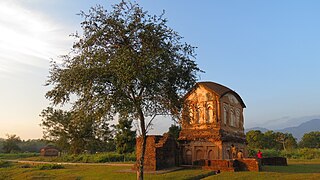
Cachardistrict is an administrative district in the state of Assam in India. After independence, the undivided Cachar district was split into four districts in Assam: Dima Hasao district, and Cachar district alongside Hailakandi and Karimganj.

Silchar is a city and the headquarters of the Cachar district of the state of Assam, India. It is second largest city of North Eastern Region after Guwahati in terms of area, population and GDP. It is also administrative capital of Barak Valley division. It is located 343 kilometres south east of Guwahati. It was founded by Captain Thomas Fisher in 1832 when he shifted the headquarters of Cachar to Janiganj in Silchar. It earned the moniker "Island of Peace" from Indira Gandhi, the then Prime Minister of India. Silchar is the site of the world's first polo club and the first competitive polo match. In 1985, an Air India flight from Kolkata to Silchar became the world's first all-women crew flight. Silchar was a tea town and Cachar club was the meeting point for tea planters.
Events in the year 1961 in the Republic of India.
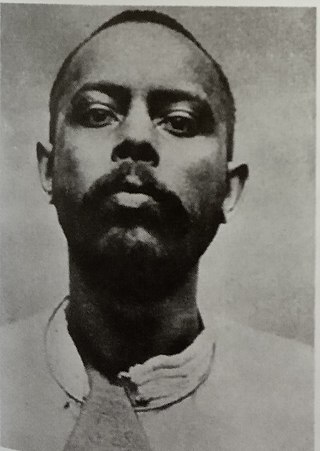
Ullaskar Dutta was an Indian revolutionary associated with Anushilan Samiti and Jugantar of Bengal, and was a close associate of Barindra nath Ghosh. He was the principal bomb maker of the Jugantar group until Hemchandra Kanungo returned from Paris learning political theory and explosive chemistry.

The Barak Valley is the southernmost region and administrative division of the Indian state of Assam. It is named after the Barak river. The Barak valley consists of three administrative districts of Assam - namely Cachar, Karimganj, and Hailakandi. The main and largest city is Silchar, which seats the headquarter of Cachar district and also serves as administrative divisional office of Barak valley division. Once North Cachar Hills was a part of Cachar district which became a subdivision in 1951 and eventually a separate district. On 1 July 1983, Karimganj district was curved out from the eponymous subdivision of Cachar district. In 1989 the subdivision of Hailakandi was upgraded into Hailakandi district.
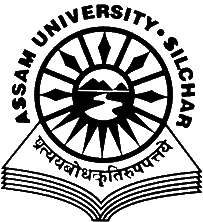
Assam University is a collegiate central public university located at Silchar, Assam, India. It was founded in the year 1994 by the provisions of an act enacted by the Parliament of India. The governor of Assam is the chief rector and the president of India is acting as the visitor of the university. The chancellor is the ceremonial head of the university, while the executive powers rest with the vice-chancellor. The university has sixteen schools which offer Humanities, Languages, Environmental Sciences, Information Sciences, Life Sciences, Physical Sciences, Social Sciences, Law, Technology and Management Studies. There are 42 departments under these sixteen schools. The five districts under the jurisdiction of Assam University have 73 undergraduate colleges as on 31 March 2020. Assam University is an institutional signatory to the Global Universities Network for Innovation (GUNI), Barcelona and United Nations Global Compact (UNGC) for its commitment to educational social responsibilities.

Cachar College is a co-educational institution established in 1960 at Silchar, India. It offers Intermediate and First Degree Level courses in Arts, Commerce and Science. The college is recognized by the UGC under Sections 2(f) and 12 (B) and is affiliated to Assam University, Silchar. The college has been accredited by National Assessment and Accreditation Council (NAAC) with B status.

Bengali Hindus are an ethnoreligious population who make up the majority in the Indian states of West Bengal, Tripura, Andaman and Nicobar Islands, Jharkhand, and Assam's Barak Valley region. In Bangladesh, they form the largest minority. They are adherents of Hinduism and are native to the Bengal region in the eastern part of the Indian subcontinent. Comprising about one-thirds of the global Bengali population, they are the second-largest ethnic group among Hindus after Hindustani Hindus. Bengali Hindus speak Bengali, which belongs to the Indo-Aryan language family and adhere to Shaktism or Vaishnavism of their native religion Hinduism with some regional deities. There are significant numbers of Bengali-speaking Hindus in different Indian states. According to the census in 1881, 12.81 percent of Bengali Hindus belonged to the three upper castes while the rest belonged to the Shudra and Dalit castes.

The Bengali Language Movement of Barak Valley was a protest against the decision of the Government of Assam to make Assamese the only sole official language of the state, even though most Barak Valley residents speak Bengali. About 80% of the Valley's residents are ethnic Bengalis. In the Barak Valley region, the ethnic Bengali population consists of both Hindus and Muslims, who are almost equal in population and constitute the overwhelming majority of the population. There is also a substantial minority of native tribals and immigrants from other parts of India. The main incident took place on 19 May 1961 at Silchar railway station in which 11 ethnic Bengalis were killed by the Assam police.

Moinul Hoque Choudhury was an Indian politician from Assam. A five-time MLA; he was the Minister of Commerce and Industrial Development during Indira Gandhi regime in 1971. He is also known as the Industrial Reformer of the Barak Valley.

Kamala Bhattacharya was an Indian student who was martyred in the Bengali Language Movement in Silchar in 1961.
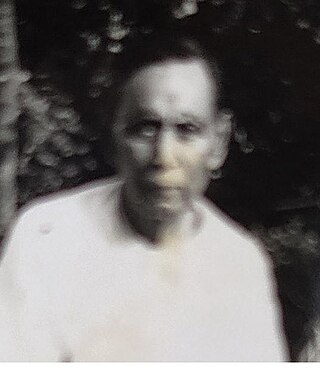
Nibaran Chandra Laskar was an Indian politician belonging to the Indian National Congress. He was elected to the Lok Sabha lower house of the Parliament of India from the Cachar, Assam in 1952 and 1957. Laskar was also a member of the Constituent Assembly of India.
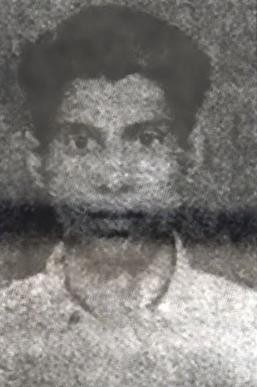
Kanailal Niyogi was an employee of the Indian Railways who took part in the Bengali Language Movement in the Barak Valley in 1961. On 19 May 1961, Niyogi became a martyr when he was shot dead by the paramilitary forces at the Tarapur railway station in Silchar.

Tarani Debnath was a Bengali who took part in the Bengali Language Movement in the Barak Valley in 1961 and became a martyr. On 19 May 1961, while participating in a satyagraha demanding the official status for Bengali language in Barak Valley, he was shot dead by the paramilitary forces.

Silchar railway station is a railway station situated at Tarapur, Silchar in Assam. The railway station falls under the jurisdiction of the Northeast Frontier Railway zone of the Indian Railways. The railway gauge functioned here is broad gauge. The station consists of single diesel line". It is one of the oldest railway station in India built under Assam Bengal Railway. The station has three platforms with a total of 14 originating trains. It serves Silchar, as well as the whole Barak Valley. Trains operate to different cities of India from Silchar including Delhi, Kolkata, Chennai, Visakhapatnam, Kanpur, Patna, Prayagraj, Coimbatore, Vijayawada, Guwahati, Bhubaneswar, Thiruvananthapuram & Agartala. As of now, 170 stations across India are directly connected to Silchar railway station.
The Assamese Language Movement refers to a series of political activities demanding the recognition of the Assamese Language as the only sole official language and medium of instruction in the educational institutions of Assam, India.
Jyotsna Chanda (1904–1971) was a politician, member of the Congress Party and a Parliamentarian who served as a member from Assam. She served in the Third and Fourth Lok Sabha, from 1962 to 1967 and 1967–1970, respectively.

Bengali Hindus are the second largest Hindu community in Assam just after Assamese speaking Hindus. As per as estimation, around 6–7.5 million Bengali Hindus live in Assam as of 2011, majority of whom live in Barak Valley and a significant population resides in Assam's mainland Brahmaputra/Assam valley. Most Bengalis in Assamese dominated Brahmaputra valley are immigrants from neighbouring East Bengal and Tripura, while Bengalis in Barak Valley region of Assam are mostly native. Assam host the second-largest Bengali Hindu population in India after West Bengal.
Anti-Bengali sentiment in India comprises negative attitudes and views on Bengalis in India. Though Bengalis have lived in different parts of India for centuries, they are subject to widespread discrimination, specially by the people from the Central India, North and North-east India. This can be either by any other community or in any particular place, due to reasons like inhabitation, discriminating sentiments, political reasons, Government actions, anti-Bangladeshi sentiment etc. The discriminative condition of Bengalis can be traced from Khoirabari massacre, Nellie massacre, Silapathar massacre, North Kamrup massacre, Goreswar massacre, Bongal Kheda etc. This has led to emergence of Bengali sub-nationalism in India as a form of protest and formation of many pro-Bengali organisations in India.

















